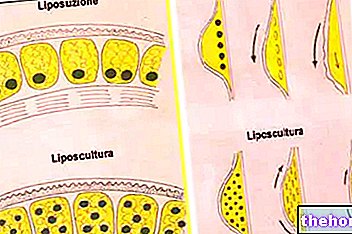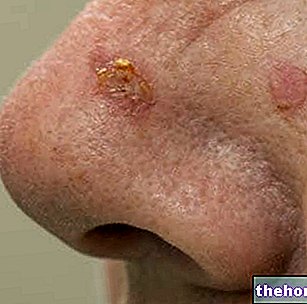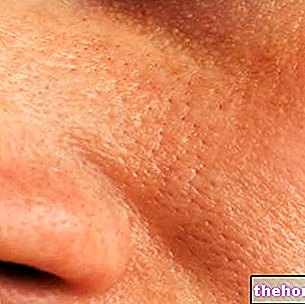Pimples is the term commonly used to indicate the skin manifestation of acne. These are raised red patches (papules), often containing pus (pustules), which in severe cases of acne take on the characteristics of real nodules.
Their onset depends on an infectious inflammatory process affecting the pilo-sebaceous glands and hair follicles.
Within certain limits, the spread of pimples is considered a physiological imperfection linked “above all” to puberty.
The most affected areas are the face, neck, chest and back.
The causes of pimples can be of various types: genetic, hormonal, infectious or psycho-emotional.
Other predisposing factors are: exposure to UV rays, chemical hypersensitivity to some products, the use of hormonal drugs, changes in the climate, etc.
When pimples become excessively widespread and large they are considered a disorder. Especially on the face, they can create dissatisfaction with one's image and important changes in social relations.

- Physical exfoliants: salt, very fine powders obtained from the grinding of some seeds, rock alum or kaolin.
- Chemical exfoliants: alpha and beta hydroxy acids, retinoids and polyhydroxy acids.
- Expansion of pathogenic bacteria on the rest of the face.
- Possible formation of definitive scars on the skin.
Some dietary supplements can be very useful.
.Some are:
- Purifying herbal teas based on:
- Burdock (Arctium lappa).
- Dandelion (Taraxacum officinale).
- Pansy: diuretic, purifying and anti-acne action.
- Natural remedies to regulate the menstrual cycle (indicated when pimples depend on certain hormonal alterations). They are indicated:
- Thyme (Thymus vulgaris).
- Calendula (Calendula officinalis).
- Fennel (Foeniculum vulgare): rich in flavonoids and phytoestrogens (normalize female hormone levels and regulate the menstrual cycle).
- Natural remedies to be taken orally (herbal teas / capsules) with a calming-anxiolytic action, indicated when pimples are triggered by excessive anxiety and stress:
- Chamomile (Chamomilla recutita).
- Valerian (Valeriana officinalis).
- Melissa (Melissa officinalis)
- Topical application of pimple creams with purifying / remineralizing action:
- Clay (Bolus alba): enriches the skin with trace elements (silicon, iron, calcium, magnesium and aluminum) and purifies it of impurities (adsorbing properties).
- Packs with essential oils with disinfectant action. It is necessary to dilute the essences in a little water and apply everything directly on the skin:
- Thyme (Thymus vulgaris).
- Lemon (Citrus limon).
- Sage (Salvia officinalis).
- Myrtle (Myrtus communis).
- Bergamot (Citrus bergamia).
- Topical application of natural antibacterial preparations:
- Tea tree oil: natural remedy particularly suitable for refractory pimples.
- Immunostimulating herbal teas:
- Echinacea (Echinacea purpurea).
- Natural liver detoxifiers, when pimples depend on liver fatigue:
- Boldo (Peumus boldus).
- Artichoke (Cynara scolymus).
- Milk thistle (Silybum marianum).
- Plant extracts with antiandrogenic properties:
- Serenoa repens.
- Pumpkin seeds.
- African pigeo (Pygeum africanum).
- Antibiotics for local application: they are recommended for the treatment of severe and complicated manifestations of pimples:
- Clindamycin (eg Dalacin-T cutaneous solution, Zindaclin gel).
- Metronidazole (e.g. Rozex cream / skin emulsion, Zidoval cream / gel)
- Antimicrobials:
- Benzoyl peroxide (eg Acnidazil, Benzac Clean).
- Azelaic Acid (eg Skinoren, Finacea).
- Hormone treatment for women with changes in estrogen and progesterone levels that can cause pimples:
- Ethinylestradiol and Cyproterone acetate (eg Diane, Dianette).
- Alpha-hydroxy acids: lactic acid, mandelic acid, glycolic acid and tartaric acid.
- Beta-hydroxy acids: salicylic acid.
- Retinoids: retinoic acid and tretinoin.
- Polyhydroxy acids: lactobionic acid and gluconolactone.




























